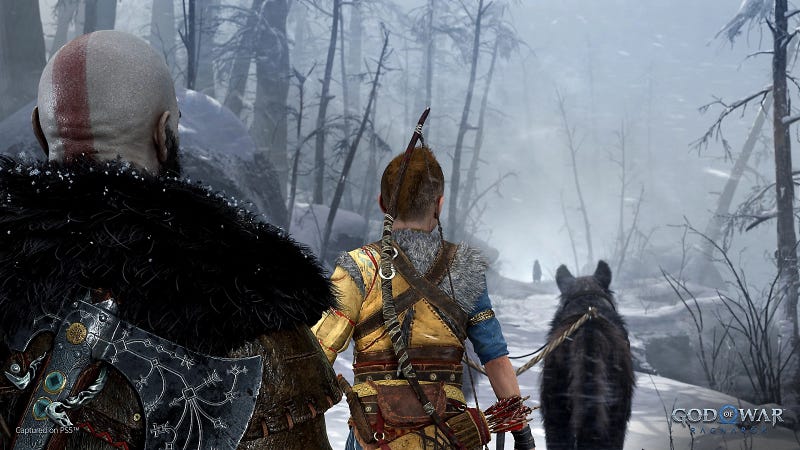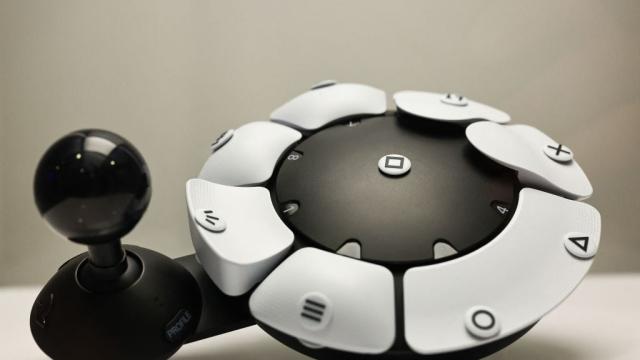I have a strange relationship with The Last of Us Part II. During its launch in 2020, I was part of a publication dedicated exclusively to highlighting accessible innovations and disabled perspectives in the games industry. As the Mobility Editor of Can I Play That, I edited plenty of features, news posts, and reviews surrounding what was widely touted as the most accessible release of the year. But when it was finally my turn to write my review, I couldn’t. The Last of Us Part II wasn’t accessible to me, due to PlayStation’s lack of accessible hardware.
Now, nearly four years later, I finally have the capability to at least boot up the remaster because of Sony’s recently released Access Controller. But unfortunately, it’s still a struggle to fully immerse myself in its world.
Access Controller Benefits and Flaws
My disability—Spinal Muscular Atrophy type 2—progressively weakens my muscles over time, meaning that I constantly need assistance for everything from eating to even writing my name. Prior to the release of the Access Controller in December 2023, I lost the capability to hold a standard console controller. Since 2018, I have yet to play a single PlayStation game, despite the growing number of accessibility tools offered to disabled players.
Before I explore the positives and negatives of this device in relation to TLOU 2, it’s important to note that the Access Controller is not comparable to Microsoft’s Xbox Adaptive Controller, which released in 2018. PlayStation’s adaptive equipment is more akin to a traditional controller, whereas the XAC is a fully customizable hub that encourages users to create their own setup with varying buttons and switches. It’s ultimately up to each individual to determine which controller will best suit their needs.
My experience with the Access Controller has been one of equal parts joy and frustration. The software allows me to fully customize each input, and set up three separate profiles which let me seamlessly choose between genres or even specific games. While these features are crucial for overall customization, I found that the biggest barriers with the Access Controller are its circular shape and size. And it’s these issues that directly hinder my experience playing games.

The most accessible game?
Booting up TLOU 2 or its remaster for the first time as a disabled individual can be daunting. You are immediately hit with dozens of accessibility options, each within their own specific preset. Depending on your situation, it’s entirely possible to spend upwards of 15-30 minutes rifling through every feature to determine if it’s right for you. I gravitated toward motor accessibility options like “Auto pick-up,” “Lock-on aim,” and “Camera assist,” the latter being necessary for me since I can no longer use two control sticks to aim and move. But despite the importance of these options, I’m still unable to take full advantage of them.
Both TLOU2 and the Access Controller let you fully customize controls, a crucial feature for physically disabled players. As someone with limited reach, I often struggle to press specific buttons like bumpers and triggers. The circular design of the Access Controller may be great for physically disabled players like quadriplegics or those with average-sized hands, players with limited reach or small, atrophied hands will be unable to properly reach the nine primary buttons on the circle. At best, I can press three of the outer buttons, as well as the center button, but that leaves five buttons unavailable to me, regardless of how I position the controller. As for a standard PlayStation controller, I’m only able to use the four face buttons, leaving the other 10 completely inaccessible to me. And that’s been my biggest problem with TLOU 2.
Every single button, including swiping on the touchpad, is a necessity to play this game. Frustratingly, you’re unable to exit the control customization menu if you leave a function unbound, or the game automatically returns schemes to their default. And since I’m only able to use approximately eight of the 14 combined buttons on both the Access Controller and standard DualSense, just configuring my controls is nearly impossible. I’m constantly needing to enter the menus to determine what buttons are best for each scenario.
So what does this look like in practice? The first mission, a relatively simplistic drawn-out cutscene, took me almost two hours to beat. Remember the section where you throw snowballs at those kids? It took 20 minutes just to figure out what buttons were necessary—immediately after spending one hour configuring my controls in the first place. Dozens of options cannot account for the individualistic nature of the disabled experience. If you do not find a solution within the menus, the game will pose insurmountable inaccessible barriers.

Going Beyond Menus
Unfortunately, this is a recurring theme for PlayStation games. My first AAA PlayStation experience with the Access Controller was God of War Ragnarök, the 2022 winner at The Game Awards for Innovation in Accessibility. I originally played the prequel on PC, and I genuinely enjoyed my time, even rolling credits after completing many of the side quests and defeating most Valkyries. I enjoyed the growth of Kratos, especially in his new role as a devoted father to his son. I looked forward to finally exploring each option and discovering how they removed barriers in the sequel on PS5. Unfortunately, I was met with the same levels of frustration as The Last of Us Part 2. Without being able to properly use the Access Controller, I cannot carry out crucial functions. And again, no option can rectify the issue.
Is this issue exclusive to me? No. Physically disabled players with limited reach or strength are going to encounter similar barriers. These critiques aren’t superficial, nor are they entirely the fault of the Access Controller. Rather, it demonstrates the importance of inclusive design and emphasizes the need to consider hardware as well as software. Two concepts can be true. TLOU 2 and Ragnarok games are accessible to a broad variety of disabled individuals. They are also failing the disabled community by extensively relying on dozens of options to dismantle barriers. And when paired with a controller that only serves a subsection of physically disabled players, the lack of inclusive design practices becomes increasingly noticeable.
There is a layer of fear and betrayal for critiquing these devices and games. How can I criticize a game that lets blind and low-vision individuals play without assistance? How can I judge a controller when so many physically disabled individuals can now enjoy a whole new library of games?While the disabled experience is based on what people can and cannot do, no game or controller will ever be perfect for everyone. And these conversations, critiques, and reviews are necessary to ultimately advance innovation.
In 2020, dozens of options were viewed as the answer to accessibility. And again in 2022, the industry celebrated extensive accessibility menus as the future of gaming for disabled players. But there is so much nuance lost in this approach. Options, hardware, and inclusive designs are all necessary to create a truly accessible experience. If one part fails to accommodate any disabled player, the façade immediately starts to crumble.
Four years ago, I felt left out of my colleagues’ joy after being unable to play The Last of Us Part II. And now, I’m grappling with the same emotions all over again. Yet, it’s important to highlight these frustrations. These games and devices aren’t failures. Rather, they perfectly exemplify the need to continue innovating.

Leave a Reply